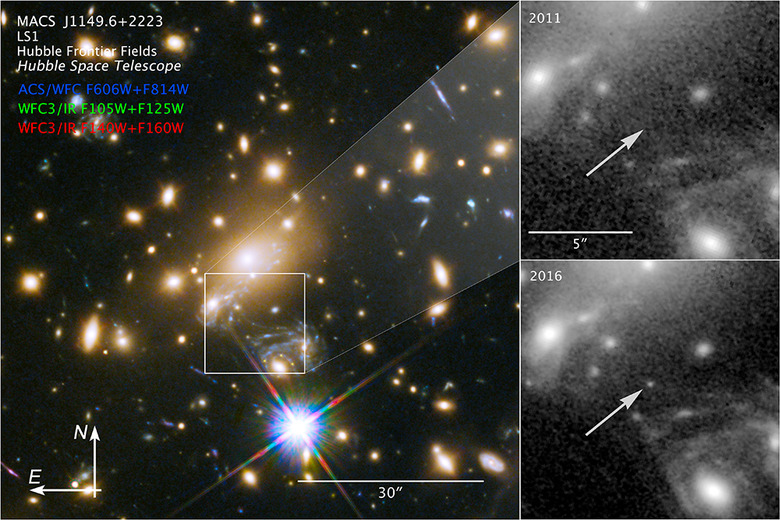Astronomers Spot The Most Distant Star Ever Observed
Spotting objects in space has gotten easier and easier thanks to technological advances, but sometimes mother nature gives astronomers a bit of help as well. Scientists using the trust Hubble Space Telescope have announced the discovery of the most distant star ever observed, and it's really, really far out there. The star, named MACS J1149 LS1 (LS1 for short), is so far away that the light researchers see from it today was produced just 4.4 billion years after the Big Bang.
Remarkably, the scientist who spotted the star weren't even really looking for it at all. The team was originally studying a supernova explosion in a galaxy cluster known as MACS J1149.5-223 when they realized a tiny blue dot in their view was actually a star in the distant background. Now the unexpected discovery is being used to demonstrate how the phenomenon of gravitational lensing can be used to detect objects we'd never be able to see on our own.
Gravitational lensing occurs when the light of a far-off object, like a star, is bent and stretched by the gravity of a different body lying between the observer and the object itself. As the light bends due to gravity it is magnified, allowing it to be observed from a much larger distance. LS1, which stands for Lensed Star 1, is the first individual star to be spotted in this manner, and its light has been magnified over 2,000 times by the gravitational lens.
"You can see individual galaxies out there, but this star is at least 100 times farther away than the next individual star we can study, except for supernova explosions," Patrick Kelly of the University of Minnesota, Twin Cities, explains. Kelly is one of the authors of a new paper in Nature Astronomy describing the discovery.
The star is so far away that it is thought to be around 100 times more distant than the next farthest star ever observed. That figures out to around nine billion light years, which is so far that there's no way we'd ever have been able to see it without the gravity assist. Very little is known about the star itself, aside from the fact that it exists, but at this point the discovery itself is still a remarkable achievement.
